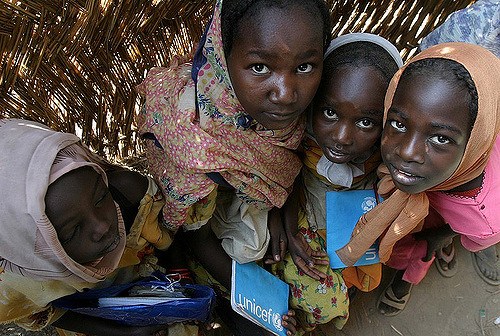Causes of Poverty in Central African Republic
 Characterized by high mortality rates and weak infrastructure, the Central African Republic (CAR) is widely known as one of the world’s least developed countries. Since gaining independence from France in 1960, the nation has experienced persistent political and socioeconomic instabilities despite having access to a wealth of natural resources.
Characterized by high mortality rates and weak infrastructure, the Central African Republic (CAR) is widely known as one of the world’s least developed countries. Since gaining independence from France in 1960, the nation has experienced persistent political and socioeconomic instabilities despite having access to a wealth of natural resources.
One prevalent challenge that numerous citizens confront is poverty. According to the World Bank’s Poverty Assessment Report, nearly 70% of CAR’s population currently lives in extreme poverty. Common causes of poverty include low agricultural productivity and an insufficient health care system. Extensive humanitarian support and intervention are needed to address and eliminate these causes in order to achieve a more stable, prosperous country in the years to come.
Low Agricultural Productivity
Agriculture is crucial to the Central African Republic, with approximately 70% of the country’s working-age population dependent on farming as a source of food and income. According to the International Fund for Agricultural Development, agriculture employs around 80% of rural people and generates 50% of GDP. However, limited trade and ongoing political conflicts have severely impeded agricultural productivity, decreasing farming yields and creating widespread food poverty for millions across the nation.
Despite centering itself on export trade, CAR faces high costs and delays for international exports. Lacklocked by its neighbors, it cannot rely upon ocean freight shipping and must instead depend upon land transport networks. Yet navigation conditions for such networks are subject to banditry and are in generally poor condition, which puts transport vehicles at risk and contributes to the increase of export time. These conditions leave farmers with little to no opportunities to export the crops that they produce and discourage them from pursuing commercial farming. for growth in the agricultural sector. Today, only approximately 5% of CAR’s arable land is cultivated – 750,000 hectares out of a potential 15 million. Subsistence farming and forestry instead dominate many communities and remain the backbone of the Central African Republic, despite its capabilities for economic growth.
As previously mentioned, CAR is also vulnerable to constant political turmoil, which often leads to conflict-related violence and citizen displacement. Following a rebel-led takeover of the capital in 2013, the Central African Republic government sought to rebuild and improve security, which remains fragile despite peace negotiations. According to a report by the United Nations Refugee Agency (UNHCR), a decade of insecurity and political instability has displaced nearly 1.3 million within and across CAR borders as of 2023. Continued rebel insurgency activities and a small state budget contribute to sustained refugee numbers and hinder citizens from finding long-term homes or available jobs in the agriculture sector – many instead struggle to meet minimum daily food requirements for themselves and their families.
Insufficient Health Care
Food insecurity has created a sizeable demand for medical services in CAR. Limited access to health and water, sanitation and hygeine (WASH) services are representative of current health conditions in the Central African Republic, especially in rural areas. Across the country, 40% of children under the age of five suffer from chronic malnutrition, a rate higher than the 30% emergency threshold. For women 15 through 49 years of age, HIV/AIDS is the main cause of death.
Although humanitarian organizations such as UNICEF have attempted to provide emergency assistance to affected areas, efforts have frequently been interrupted by conflict. In 2021, UNICEF reported that one in five of their nutrition units and 30 of their health facilities were closed, 14 of which were attacked. Armed incursions into hospitals have subjected patients and medical staff to assault, interrogation and burglary. The threat of armed interference has impacted the distribution of health care workers and has disrupted the supply and flow of needed medication to patients. The few supplies that hospitals have been able to procure are expensive and cannot be afforded by a majority of the population. According to the World Health Organization (WHO) and the Ministry of Health, less than half of the country’s health care facilities are fully operational, and the ratio of doctors to people remains one of the lowest in the world.
In Conclusion
The Central African Republic is in vital need of alleviating the causes of poverty and poverty itself. Although its geographical location cannot be changed, international and local humanitarian groups must assist with funding physical infrastructure along trade routes and providing security services for hospitals and other medical facilities. Supplies of drugs and treatment must be provided to patients at a low cost across the country despite the risk of burglary to effectively combat prevalent diseases such as HIV/AIDS and malaria. Funding is crucial for mitigating the food crisis for the displaced and those within the agricultural sector. Policy must be enacted to strengthen support for organizations struggling to fight against poverty, ensuring that they are not vulnerable to exploitation and violence. Although initiatives such as UNICEF and the US Agency for International Development continue to make coordinated efforts to resist poverty in the Central African Republic, extensive and additional humanitarian assistance is needed to make a lasting difference in the country and to grant stability to those in need.
– Lucy Voegeli, Moon Jung Kim
Photo: Flickr
Updated: March 19, 2024
